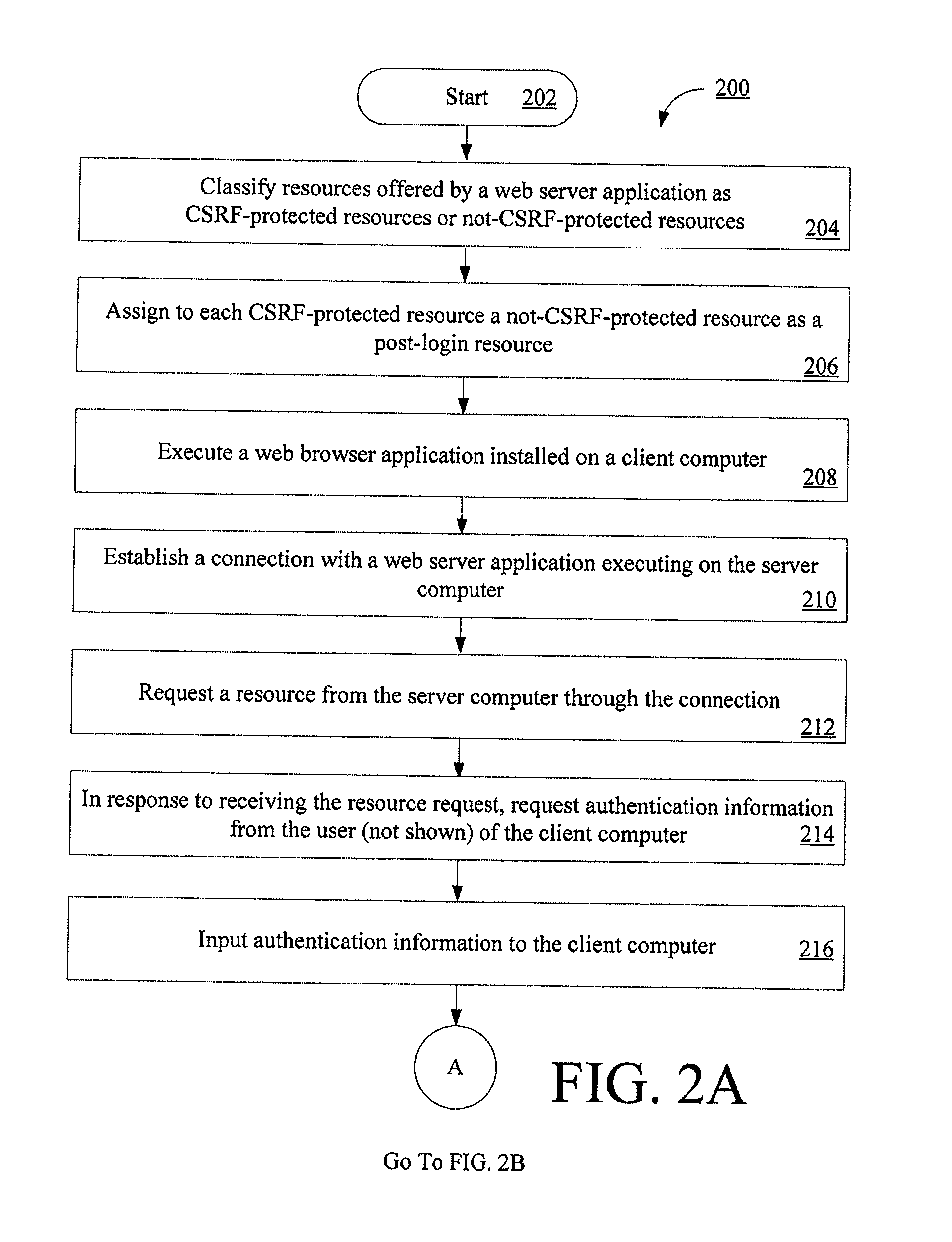Systems and methods for protecting web based applications from cross site request forgery attacks
a technology of web based applications and applied in the field of systems and methods for protecting web based applications from cross site request forgery attacks, can solve problems such as changes on a server without a user's, private data being disclosed to an unknown third party, and web based applications being subject to csrf attacks
- Summary
- Abstract
- Description
- Claims
- Application Information
AI Technical Summary
Benefits of technology
Problems solved by technology
Method used
Image
Examples
Embodiment Construction
[0014]The following detailed description is directed to systems, methods, and computer-readable media for protecting web based applications from CSRF attacks. The method embodiments of the present invention generally involve the acts of (1) classifying resources offered by a web server application as CSRF-protected resources or not-CSRF-protected resource and (2) providing CSRF protection to web applications. The term “resource”, as used herein, refers to every thing or entity that can be identified, named, addressed or handled, in any way whatsoever, in the World Wide Web (WWW) at large, or in any networked information system. Act (2) generally involves initializing a CSRF protection secret in a web browser program at the end of a user authentication, performing a server-side rewriting operation, performing a client-side rewriting operation, requesting a resource, and authorizing the resource. The term “CSRF protection secret”, as used herein, refers to a token generated at a serve...
PUM
 Login to View More
Login to View More Abstract
Description
Claims
Application Information
 Login to View More
Login to View More - R&D
- Intellectual Property
- Life Sciences
- Materials
- Tech Scout
- Unparalleled Data Quality
- Higher Quality Content
- 60% Fewer Hallucinations
Browse by: Latest US Patents, China's latest patents, Technical Efficacy Thesaurus, Application Domain, Technology Topic, Popular Technical Reports.
© 2025 PatSnap. All rights reserved.Legal|Privacy policy|Modern Slavery Act Transparency Statement|Sitemap|About US| Contact US: help@patsnap.com



